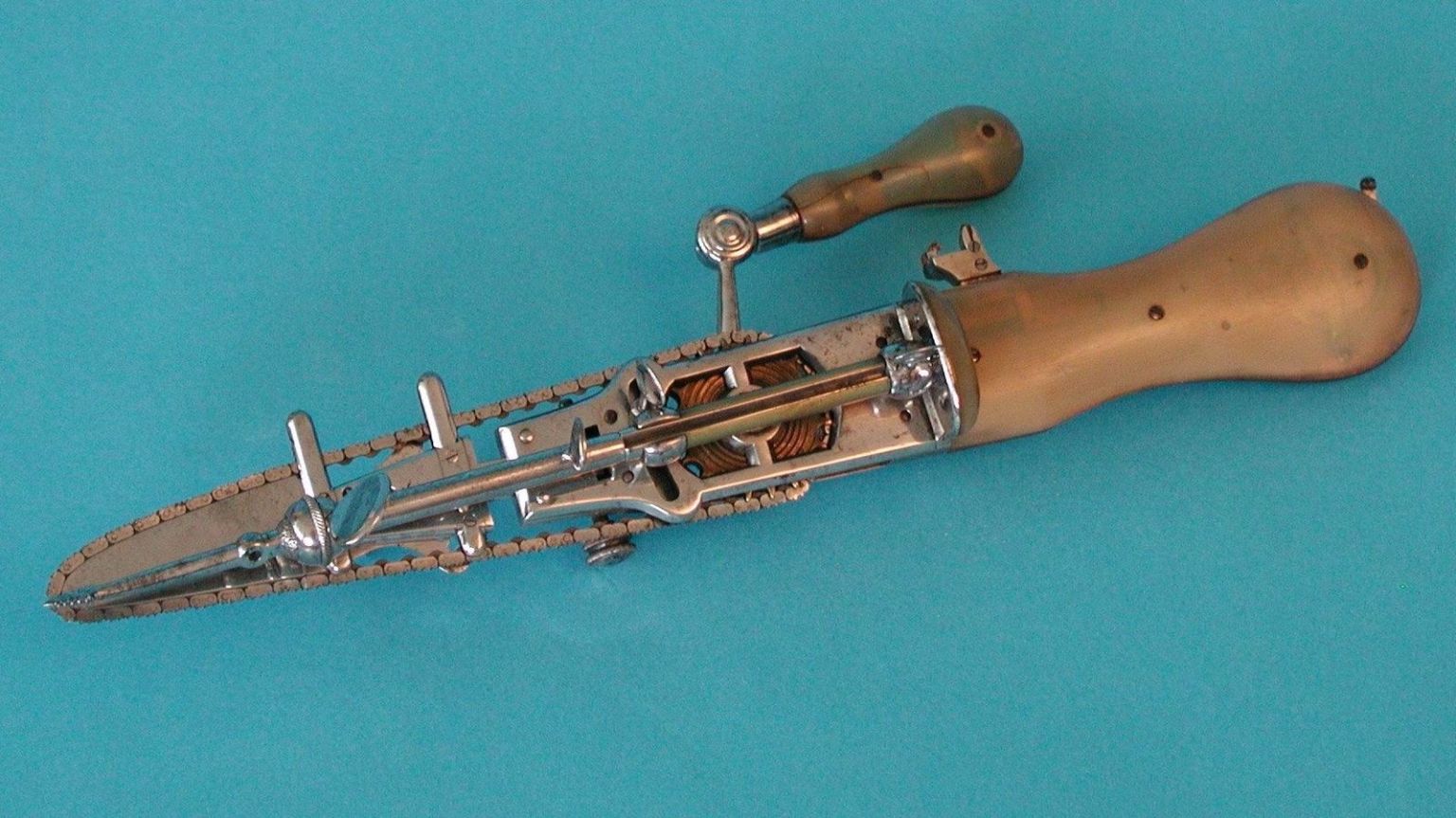When you can't do a c-section.
-
The history of the chainsaw:
Your image of a chainsaw probably includes a Pacific Northwest logger in a plaid shirt chopping down a tree with a modern chainsaw, but the first was much smaller. They called it the osteotome, which basically translates to “bone cutter” from Greek.

The osteotome, which was the original chainsaw.
It looked like a kitchen knife with teeth wound in an oval powered by a hand crank.
It’s funny to think something as horrifying as this was actually invented to improve people’s lives. Honestly, it also probably saved some lives along the way.
It made cutting the pelvic bone easier, and it became a tool for cutting bone in other procedures throughout the 19th century. As anesthesia and C-sections came into practice, symphysiotomys became less common, and the osteotome disappeared.
-
Etymology of the word:
The origin of the term is not definitively known. Roman Lex Regia (royal law), later the Lex Caesarea (imperial law), of Numa Pompilius (715–673 BC),[153] required the child of a mother who had died during childbirth to be cut from her womb.[154] There was a cultural taboo that mothers should not be buried pregnant,[155] that may have reflected a way of saving some fetuses. Roman practice required a living mother to be in her tenth month of pregnancy before resorting to the procedure, reflecting the knowledge that she could not survive the delivery.[156]
Speculations that the Roman dictator Julius Caesar was born by the method now known as C-section are false.[157] Although caesarean sections were performed in Roman times, no classical source records a mother surviving such a delivery, while Caesar's mother lived for years after his birth.[154][158] As late as the 12th century, scholar and physician Maimonides expresses doubt over the possibility of a woman's surviving this procedure and again becoming pregnant.[159] The term has also been explained as deriving from the verb caedere, 'to cut', with children delivered this way referred to as caesones. Pliny the Elder refers to a certain Julius Caesar (an ancestor of the famous Roman statesman) as ab utero caeso, 'cut from the womb' giving this as an explanation for the cognomen Caesar which was then carried by his descendants.[154] Nonetheless, the false etymology has been widely repeated until recently. For example, the first (1888) and second (1989) editions of the Oxford English Dictionary say that caesarean birth "was done in the case of Julius Cæsar".[160] More recent dictionaries are more diffident: the online edition of the OED (2021) mentions "the traditional belief that Julius Cæsar was delivered this way",[161] and Merriam-Webster's Collegiate Dictionary (2003) says "from the legendary association of such a delivery with the Roman cognomen Caesar".[162]
The word Caesar, meaning either Julius Caesar or an emperor in general, is also borrowed or calqued in the name of the procedure in many other languages in Europe and beyond.[163]
Finally, the Roman praenomen (given name) Caeso was said to be given to children who were born via C-section. While this was probably just folk etymology made popular by Pliny the Elder, it was well known by the time the term came into common use.[164]
I remember reading an article about the etymology of the term...